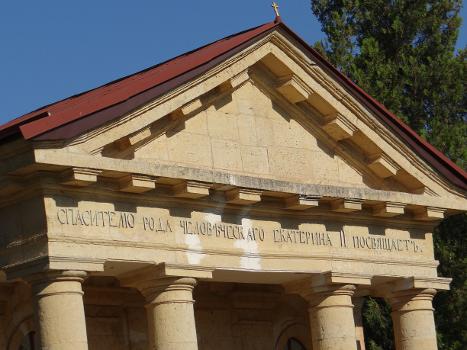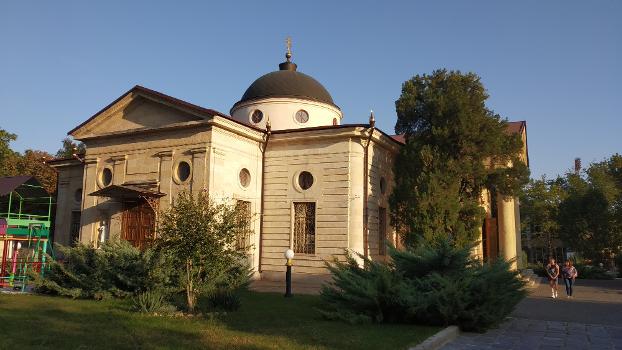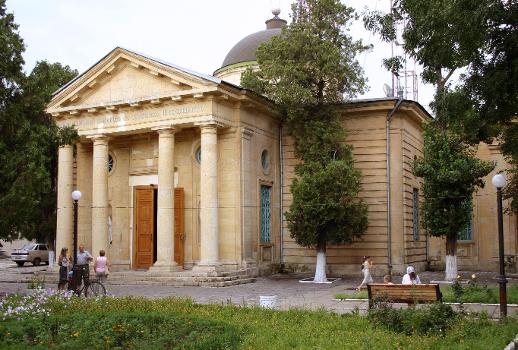General Information
Project Type
| Function / usage: |
Cathedral |
|---|---|
| Structure: |
Dome |
| Architectural style: |
Neoclassical |
| Material: |
Masonry structure |
Location
| Location: |
Kherson, Kherson Oblast, Ukraine |
|---|---|
| Coordinates: | 46° 38' 20.10" N 32° 37' 31.16" E |
Technical Information
Materials
| building structure |
sandstone
|
|---|
Excerpt from Wikipedia
The Cathedral of St. Catherine (Ukrainian: Свято-Катериненський собор, Russian: Свято-Екатерининский собор) is a religious building belonging to the Orthodox faith which is situated within the fortress of Kherson, Ukraine. It was built in 1781–1786, one of the earliest churches in New Russia. It is a domed sandstone structure with a Tuscan portico and heavily rusticated walls. The church was dedicated to Catherine of Alexandria, the patron saint of the reigning empress.
The church was built by General Ivan Gannibal in the aftermath of the Russo-Turkish war and Russia's annexation of New Russia. It was intended as a memorial to the war of conquest and is full of symbolism illustrating Russia's claims to the Byzantine heritage. The architect is thought to have been Ivan Starov (who worked extensively for Prince Potemkin); but the actual construction was supervised by the little-known Ivan Sitnikov.
The earliest description of the church is found in the diary of Francisco de Miranda. In 1790 Prince Potemkin asked Starov to remodel the dome in imitation of his own palace in St. Petersburg. The belfry was added in 1800 but was dismantled within several years, after an earthquake. After Potemkin's death he was buried in the cathedral, as was Prince Charles Frederick Henry of Württemberg, Maria Feodorovna's brother.
The cathedral's icons were patterned after the Hermitage paintings by the 17th-century Spanish artists such as Murillo. Vladimir Borovikovsky may have had a hand in their creation. The walls contain the copies of six life size figures of the apostles and saints executed by Gavrila Zamorayev from Moscow (1758-1823).
After the Russian Revolution, the church was turned into a museum of atheism. Most icons were lost, only a few ended up in the collection of a local art museum. The church was reopened by the invading Germans in 1941, only to be shut down by the Soviets in 1962. The building was used as a facility for log storage. The Neoclassical belfry, dating from about 1806, was torn down. It was not until 1991 that the Russian Orthodox Church reclaimed the grounds.
Text imported from Wikipedia article "St. Catherine''s Cathedral, Kherson" and modified on March 3, 2022 according to the CC-BY-SA 4.0 International license.
Participants
- Ivan Yegorovich Starov (architect)
Relevant Web Sites
- About this
data sheet - Structure-ID
20033851 - Published on:
31/12/2007 - Last updated on:
13/03/2022

.jpg)

_1.jpg)





